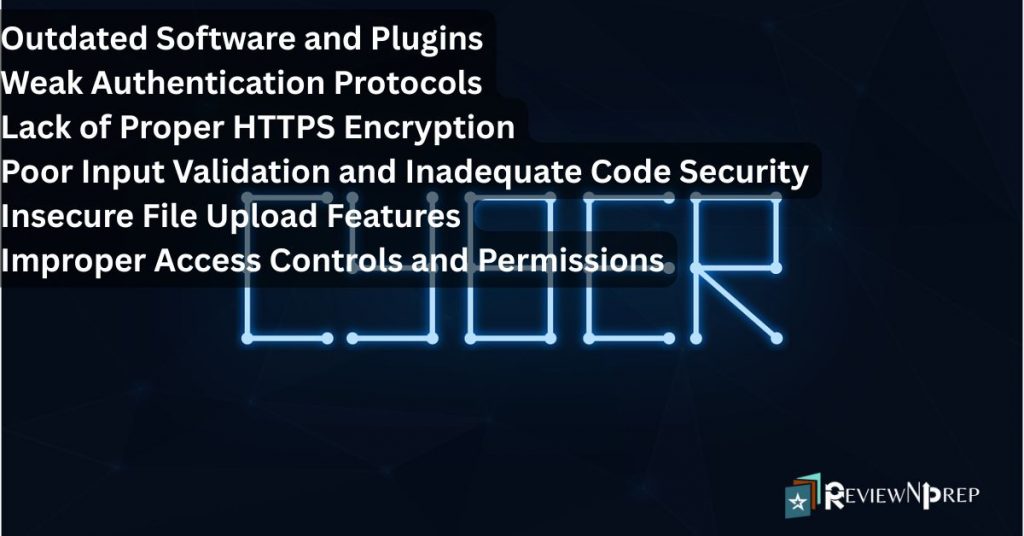Business websites are a prime target for cybercriminals. Whether large or small, companies rely heavily on their websites for customer interaction, data collection, marketing, and e-commerce transactions. Many websites are built or maintained with insufficient attention to security, leaving them vulnerable to a variety of cyber threats. Hackers exploit these weaknesses to gain unauthorized access, steal sensitive data, or disrupt operations.
Understanding the key vulnerabilities in website infrastructure is critical to protecting a business from the escalating dangers of cyberattacks. This article examines six common weak points that can expose business websites to serious cyber risks.
Outdated Software and Plugins
One of the most frequently exploited vulnerabilities on business websites is outdated software, particularly content management systems (CMS), themes, and plugins. Hackers actively seek out websites running obsolete versions of platforms like WordPress, Joomla, or Drupal, knowing these older systems often have known security flaws. Plugins, while useful for adding functionality, are another significant risk when not regularly updated or properly maintained.
As experts from littlefish.co.uk/our-services/cyber-security-services/ explain, many attacks begin by exploiting a single outdated plugin to gain backdoor access to a website. Businesses must adopt a strict routine of software updates and monitor plugin performance to close off these common entry points.
Weak Authentication Protocols
Poor password practices and weak authentication protocols continue to plague many websites. Far too often, administrative accounts use easily guessed credentials like “admin” or “123456,” giving hackers a simple path into the backend. If websites lack multi-factor authentication (MFA), unauthorized access becomes much easier.
Credential stuffing attacks, where stolen usernames and passwords from other breaches are used en masse, can quickly compromise accounts with inadequate security. Implementing strong, unique passwords and enforcing MFA for all users can significantly reduce this risk and enhance site security.
Lack of Proper HTTPS Encryption
Secure communication between users and websites is important in preventing data interception. Many small and medium-sized business websites still fail to use HTTPS encryption, leaving data exposed during transmission. This is dangerous for sites that handle sensitive information like login credentials, payment details, or customer contact forms.
Without HTTPS, attackers can eavesdrop on traffic and perform man-in-the-middle attacks. Installing a valid SSL/TLS certificate is a relatively simple and affordable step that boosts security and improves customer trust and search engine rankings.
Poor Input Validation and Inadequate Code Security
Websites that do not properly validate user input are at high risk for attacks such as SQL injection and cross-site scripting (XSS). These vulnerabilities allow hackers to inject malicious code through form fields or URLs, potentially gaining access to databases or executing commands in users’ browsers.
Inadequate input validation is often a result of poor development practices or a lack of awareness among developers. Ensuring that all user inputs are properly sanitized and validated before being processed is crucial to preventing these types of attacks. Code reviews, penetration testing, and secure development training for programmers can help address these issues.
Insecure File Upload Features
Allowing users to upload files to a website without stringent controls is another potential security risk. Attackers can exploit these upload features—whether for resumes, images, or documents—to introduce malicious code or access the server environment. In the worst cases, attackers can upload executable files that give them control over the server.
To mitigate this risk, websites must implement strict validation checks, limit acceptable file types, scan files for malware, and store uploads in separate directories with no execution permissions. These steps can greatly reduce the chance of harmful files slipping through unnoticed.
Improper Access Controls and Permissions
Misconfigured access controls can open up a website to various internal and external threats. This includes granting unnecessary administrative privileges, failing to restrict access to critical directories, or leaving backend management portals exposed to public networks. Such oversights allow insiders and outsiders to tamper with sensitive parts of the website infrastructure.
Establishing clear user roles, limiting access based on the principle of least privilege, and regularly auditing access logs are crucial measures to keep the site secure. A robust permissions framework ensures that users can only access what they genuinely need.

Conclusion
No business website is immune to cyber threats, but understanding and addressing these weak points can significantly reduce the chances of a successful attack. By maintaining current software, enforcing strong authentication, using HTTPS, validating inputs, securing file uploads, and managing access permissions properly, companies can build a resilient online presence.
Cybersecurity is not a one-time fix but an ongoing commitment to monitoring, improving, and adapting. That commitment can be the difference between business continuity and a costly breach.
Further Reading:
Mastering Cybersecurity: Skills for Professional Advancement
Data Privacy Laws and Career Growth: Strategies for Cybersecurity Professionals in 2024

